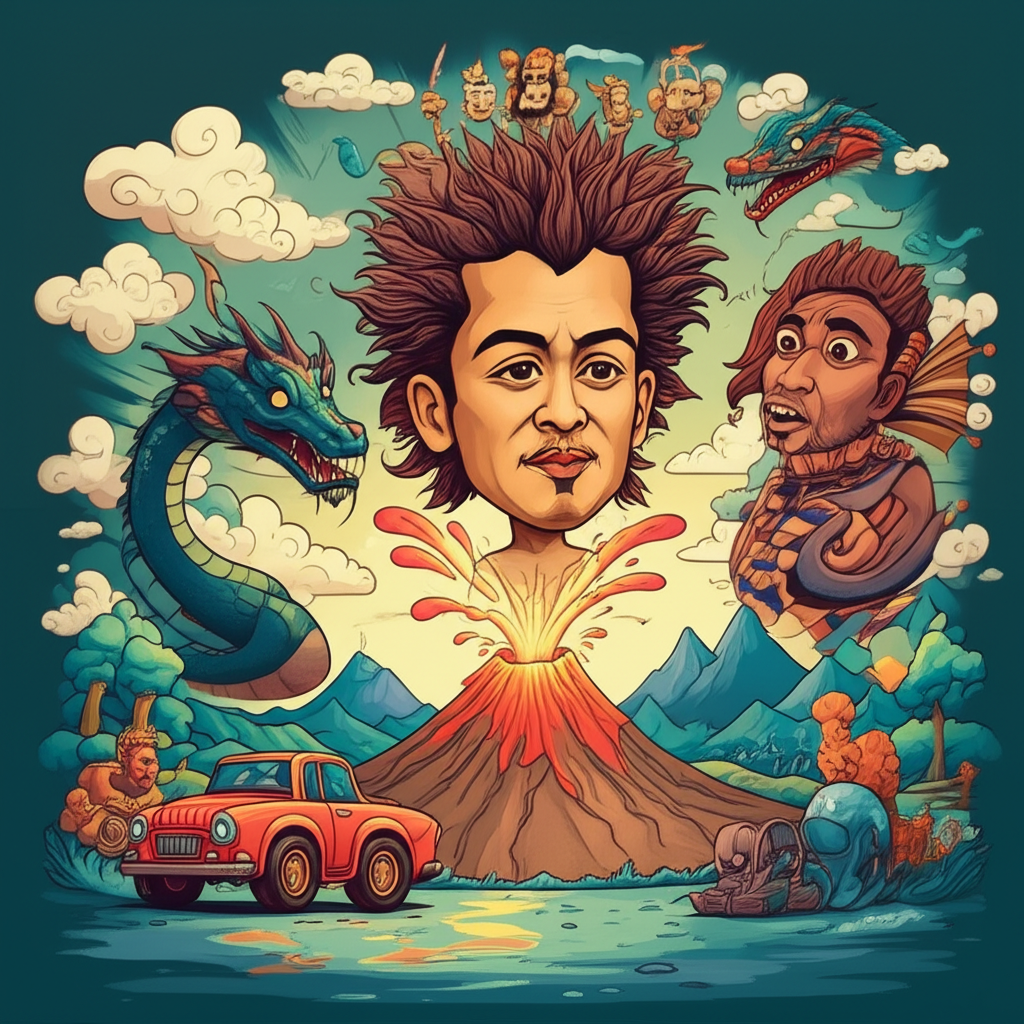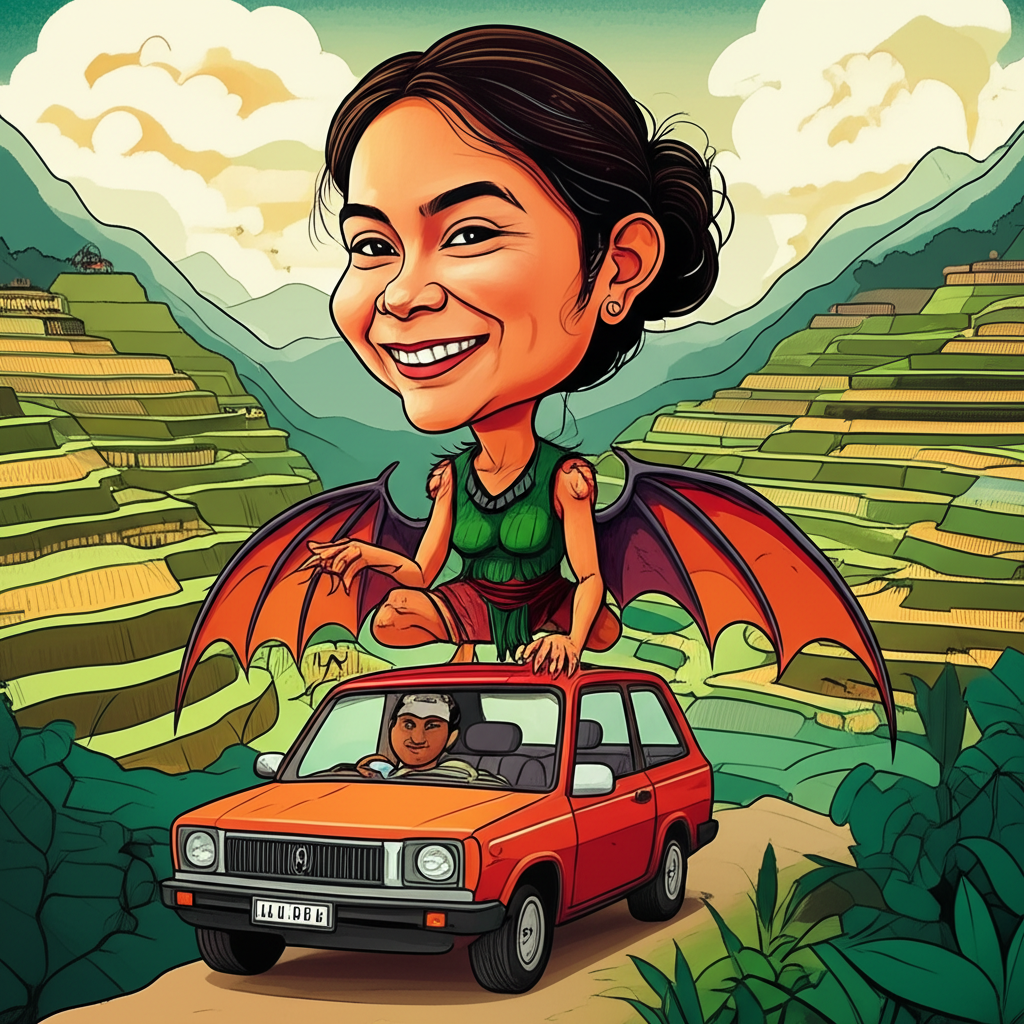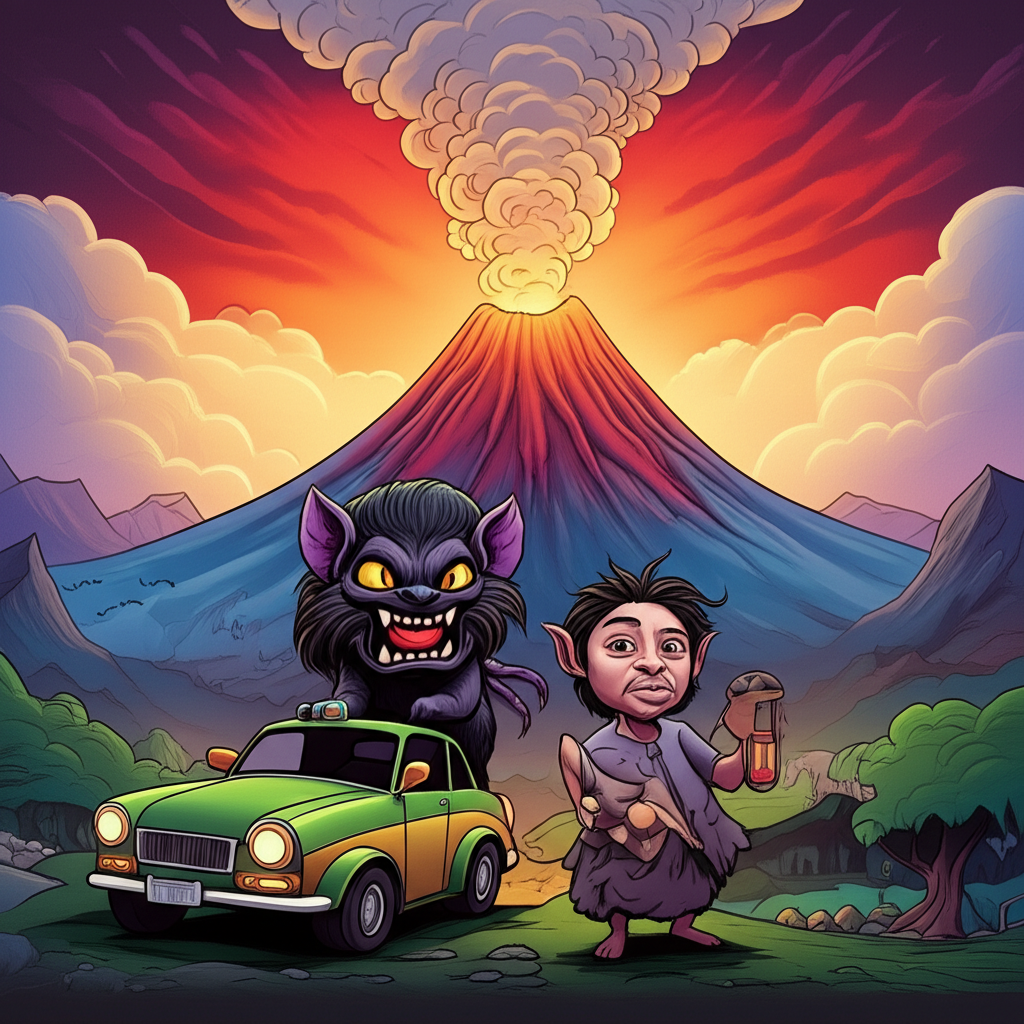
Introduction:
The Philippines, a nation sculpted by volcanic fire and cradled by vast oceans, possesses a rich tapestry of myths and legends passed down through generations. Among the most compelling is the story of Bathala, the supreme deity; Bakunawa, the serpent-dragon of the deep; and the majestic Mayon Volcano, a landform inextricably linked to their cosmic dance. This is a traditional narrative, a creation of the ancient Filipinos to explain the world around them, a testament to their fears, hopes, and the power of their imagination. It is a story woven from the threads of observation, experience, and the inherent human need to understand the mysteries of existence.
Origins and Cultural Background:
The myth of Bathala, Bakunawa, and Mayon Volcano likely originated in the pre-colonial Philippines, a time when animistic beliefs permeated every aspect of life. Society was largely agrarian, dependent on the cycles of nature and vulnerable to its unpredictable forces. People lived in close harmony with the environment, their lives dictated by the rhythms of the sun, moon, and stars. Natural phenomena – eclipses, volcanic eruptions, earthquakes – were not understood through the lens of scientific inquiry but rather attributed to the actions of powerful, often capricious, deities and mythical creatures.
In this world, Bathala, the all-powerful creator, held dominion over the heavens, a figure of authority and justice. Bakunawa, the monstrous serpent coiled in the ocean depths, represented the destructive forces of nature, the unpredictable and often terrifying power of the sea. The world was perceived as a battleground between these forces of creation and destruction, a delicate balance constantly threatened by the whims of the gods and mythical beasts. This era was marked by a strong oral tradition, with stories serving not only as entertainment but also as a means of transmitting knowledge, values, and cultural identity.
Character / Creature Description:
-
Bathala: Often described as the supreme deity, the caretaker of the earth and the people. He is the creator, the one who breathed life into the world. He is not depicted with a specific physical form in most accounts, rather representing an overarching power and benevolent presence. His symbolic attribute is justice and order, representing the harmonious balance of the universe.
-
Bakunawa: The monstrous serpent-dragon of the sea, often depicted with a gigantic mouth and a voracious appetite. Its primary attribute is its insatiable hunger, particularly for the celestial bodies, the moon and stars. The Bakunawa embodies chaos, destruction, and the primal fear of the unknown depths. In some depictions, it is covered in scales of iridescent colors and has whiskers like a catfish.
-
Mayon Volcano: Not a sentient being like Bathala or Bakunawa, but a significant geographical feature imbued with symbolic meaning. Its near-perfect cone shape symbolizes both beauty and danger, a testament to the creative and destructive forces of nature. In the myth, it is linked to a tragic love story, representing sacrifice, passion, and the enduring power of the human spirit. It’s a constant reminder of the earth’s powerful, unpredictable nature.
Main Story / Narrative Retelling:
Long ago, in a time when the islands were new and the stars shone brightly in the night sky, Bathala, the supreme deity, watched over his creation. The land was fertile, the seas teemed with life, and the people lived in peace. However, in the deep, dark abyss of the ocean, lurked Bakunawa, a serpent-dragon of immense size and insatiable hunger.
Bakunawa grew envious of the celestial lights, the stars that illuminated the night and the moon that guided the tides. One by one, Bakunawa devoured the stars, plunging the world into darkness and fear. The people cried out to Bathala for help.
Bathala, hearing their pleas, knew that he had to intervene. He warned the people to make noise whenever Bakunawa attempted to swallow the moon. They were to bang pots and pans, blow horns, and shout to scare the monstrous serpent away.
One night, Bakunawa rose from the depths, its massive jaws agape, and lunged for the moon. The people, prepared for this moment, erupted in a cacophony of noise. The din was deafening. Bakunawa, startled and momentarily disoriented, was forced to release the moon. The moon, though temporarily darkened by the serpent’s grasp, returned to its full brilliance.
But the threat of Bakunawa remained.
In another tale woven around this cosmic drama, a beautiful maiden named Daragang Magayon lived in a village near a majestic mountain. Her beauty was legendary, attracting suitors from far and wide. However, she fell in love with Ulap, a brave warrior from a rival tribe. Their love was forbidden, and their secret meetings were fraught with danger.
One day, their love was discovered, and Ulap was challenged to a duel by Daragang Magayon’s jealous suitor. During the battle, a stray arrow struck Daragang Magayon, and Ulap, grief-stricken, rushed to her side, only to be fatally wounded himself.
Bathala, witnessing their tragic love, was moved by their sacrifice. He buried them together, and from their grave rose the majestic Mayon Volcano, its perfect cone a testament to their enduring love and the beauty that can arise from tragedy. The eruptions of the volcano were said to be the echoes of their love, a reminder of their passion and sacrifice. Some say that the Bakunawa is the reason for Mayon Volcano’s eruptions. They say it attempts to swallow the moon, and the people beat pots and pans, which in turn startles the Bakunawa, causing it to thrash around in the water. This causes the land to shake, and the volcano to erupt.
Symbolism and Meaning:
The myth of Bathala, Bakunawa, and Mayon Volcano is rich in symbolism. The Bakunawa represents the unpredictable and destructive forces of nature, the eclipses, typhoons, and earthquakes that threatened the lives of the ancient Filipinos. The act of scaring the Bakunawa away symbolizes the human struggle against these forces, the collective effort to overcome adversity through community action.
Mayon Volcano, born from a tragic love story, represents the enduring power of love, sacrifice, and the beauty that can arise from tragedy. Its eruptions serve as a reminder of the volatile nature of life, the constant interplay between creation and destruction. The story also reflects the ancient Filipinos’ understanding of the interconnectedness of the natural world, the belief that the cosmos, the land, and human lives were inextricably linked.
Modern Perspective:
Today, the myth of Bathala, Bakunawa, and Mayon Volcano continues to resonate in Philippine culture. It is retold in children’s books, adapted into theatrical performances, and referenced in contemporary literature and art. The Bakunawa, in particular, has found its way into popular culture, appearing in video games, movies, and graphic novels, often depicted as a formidable and terrifying creature.
Cultural studies scholars analyze the myth for its insights into pre-colonial Philippine beliefs, social structures, and worldview. The story serves as a window into the past, offering a glimpse into the values and fears of a people who lived in close harmony with nature and sought to understand the mysteries of the universe through the power of storytelling.
Conclusion:
The story of Bathala, Bakunawa, and Mayon Volcano is a testament to the rich cultural heritage of the Philippines, a reminder of the power of imagination and the enduring human need to understand the world around us. It is a cultural story, a product of a specific time and place, not a belief to be practiced or worshipped.
As Muslims, we recognize that only Allah is the true Creator and Sustainer of the universe. He is the source of all power and wisdom, and we turn to Him alone for guidance and protection. These ancient stories, however, serve as a valuable reminder of our cultural roots, a connection to the past that enriches our understanding of who we are. They are echoes of a time when storytelling was a vital part of life, a means of transmitting knowledge, values, and cultural identity from one generation to the next. The beauty of storytelling lies in its ability to transport us to different worlds, to explore the depths of human emotion, and to remind us of our shared humanity.





